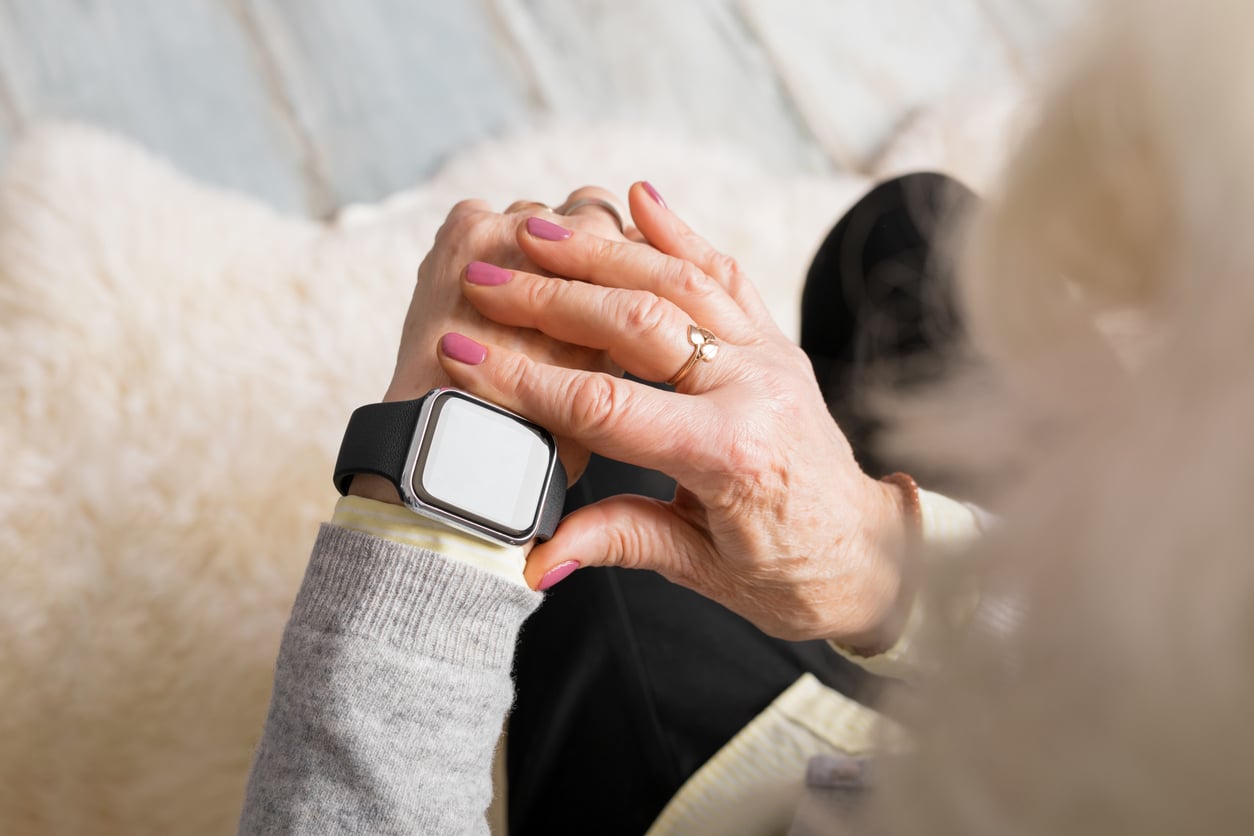One thing that worries many family caregivers – especially those of us who don’t live nearby – is our family members feeling lonely or isolated.
“We are social animals and need to have family and tribe and a sense of belonging to be psychologically whole,” says Andrew Duxbury, professor in the Division of Gerontology, Geriatrics and Palliative Care at the University of Alabama-Birmingham. “As the vicissitudes of life cause our bodies to change, getting out becomes harder, we tend to spend more time at home and our peer group starts to fall away.”
But it doesn’t have to be that way.
“The rise of the Internet has helped reverse these trends by allowing seniors to stay in touch with family and peers without having to leave a comfortable environment,” Duxbury says.
Here’s how technology is helping seniors stay connected and live healthier lives.
Video Calling and Chats for Older Family Members
“We all want to be included in things,” says Deborah Shouse, author of Connecting in the Land of Dementia: Creating Activities to Explore Together. “Staying connected with family and friends enriches life and offers an air of excitement to everyday life. Having a visual to go along with the conversation often helps us all feel more connected.”
Video calls and conferencing apps make inclusion and connection possible, and more older Americans are already using the technology needed to connect in these ways. Data from Pew Research shows that about 91% of Americans 65 and older own a mobile phone and 53% own smartphones1.
Social Media Keeps Older Adults Engaged
Duxbury says he knows a lot of 80-somethings who use Facebook and other social media. According to a Pew Research report, 8% of online adults 65 and older use Instagram, 11% use LinkedIn, and 46% and use Facebook2. Like Vicki Lamb.
“Facebook is a wonderful way to stay in touch with family and friends,” says Lamb, who is 79. “You can see what they are doing and watch the children and grandchildren grow. Three of my children spent 18 days in Italy, Greece and Crete — I am quite limited by arthritis, but I traveled with them vicariously. And in my late husband’s family of 224 members, Facebook really allows me to stay involved.” Lamb also participates in a weekly video conference with her nephews and their families.
Wearables & Devices Can Improve Safety
Home monitoring systems and wearable medical alert systems with automatic notification capabilities make it possible for caregiving children to know when their parents are safe or need assistance without having difficult conversations.
Duxbury says wearables, in particular, support better connectedness and communication for seniors through “real-time monitoring of activity and immediate alert to a fall or other untoward event; helping prevent wandering in the cognitively impaired, [and] sending real-time data to central computers which can alert a healthcare provider if something is out of parameters.”
6 Tips for Talking to Your Parents About Technology
Ready to talk to mom or dad about using technology to stay better connected and engaged? Here are six tips:
- Plan the conversation for a time of day when everyone is rested and alert.
- Be sensitive to your parent’s feelings of self-consciousness and fear of being put “in the home” — explain that some technology might be to avoid that very thing.
- Stay focused on the benefits to you and your parents, including your peace of mind.
- Use the technology, when possible, to support the conversation.
- Cite examples of friends or family already using technology to stay safe and independent.
- Prepare to have a series of incremental conversations about aging, isolation and healthcare.
Staying connected is important for your peace of mind and your family members’ wellbeing. Start exploring how technology can help today.
———-
1 “Mobile Fact Sheet.” Pew Research Center, Washington, D.C. (June 12, 2019), https://www.pewresearch.org/internet/fact-sheet/mobile/.
Pew Research Center bears no responsibility for the analyses or interpretations of the data presented here. The opinions expressed herein, including any implications for policy, are those of the author and not of Pew Research Center.
2 “Social Media Fact Sheet.” Pew Research Center, Washington, D.C. (June 12, 2019), https://www.pewresearch.org/internet/fact-sheet/social-media/.
Pew Research Center bears no responsibility for the analyses or interpretations of the data presented here. The opinions expressed herein, including any implications for policy, are those of the author and not of Pew Research Center.




